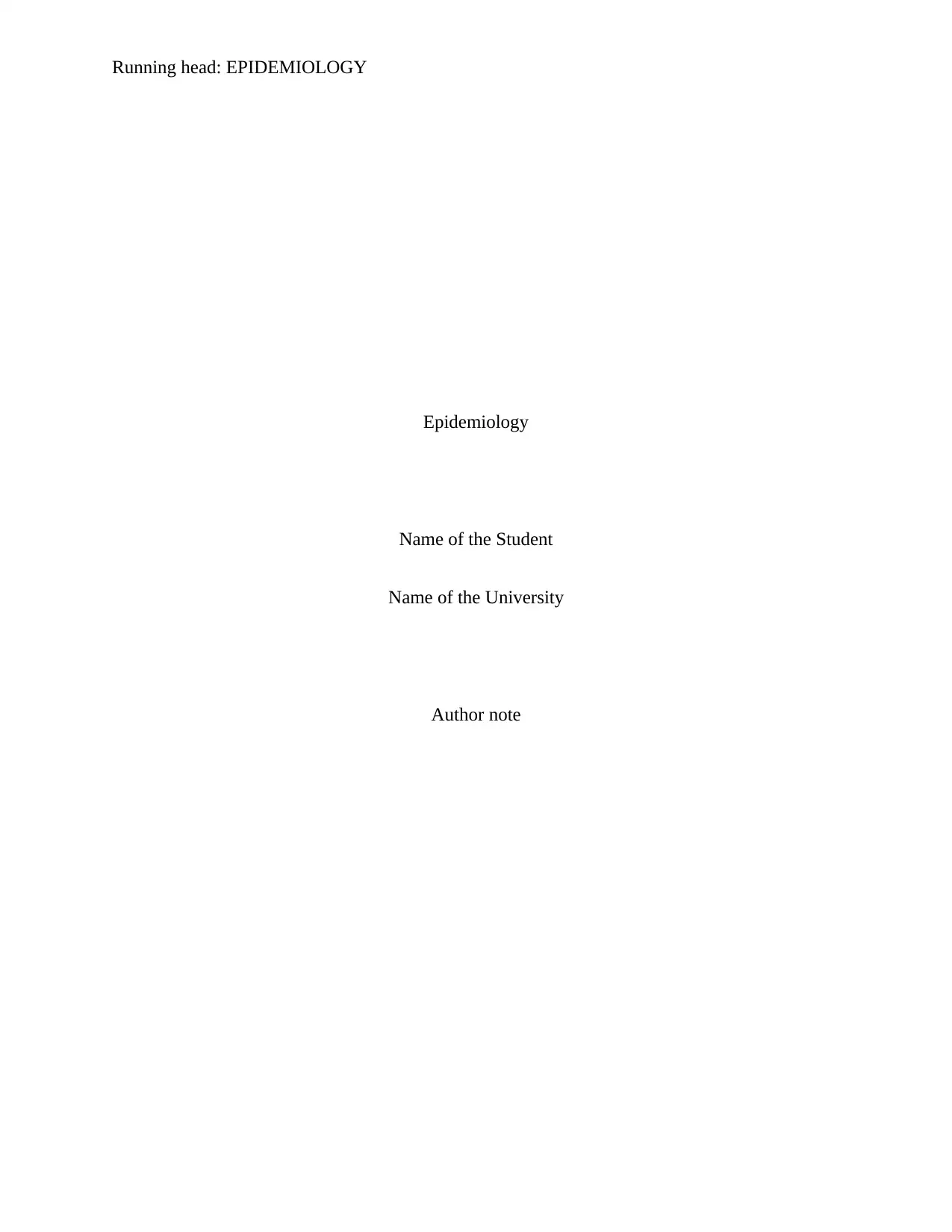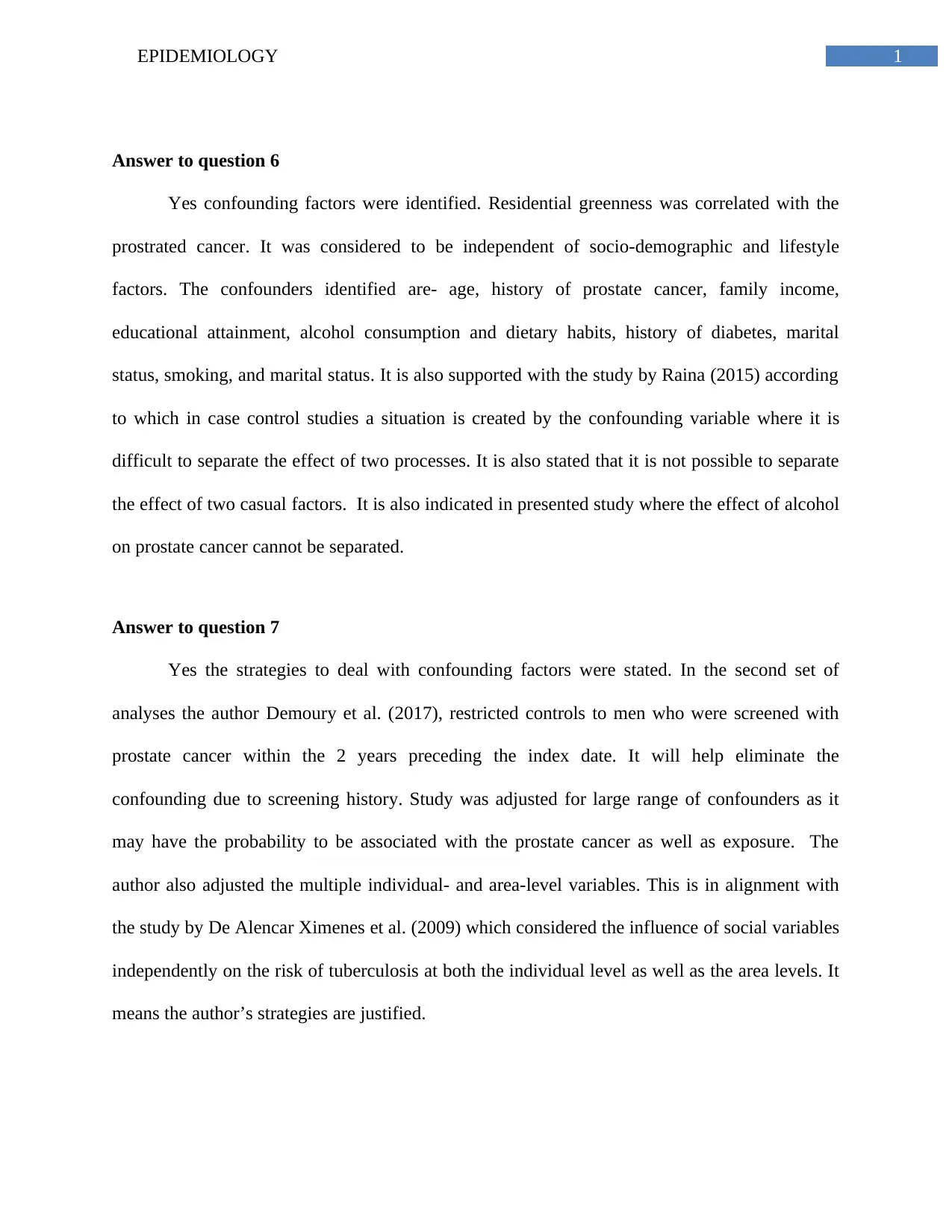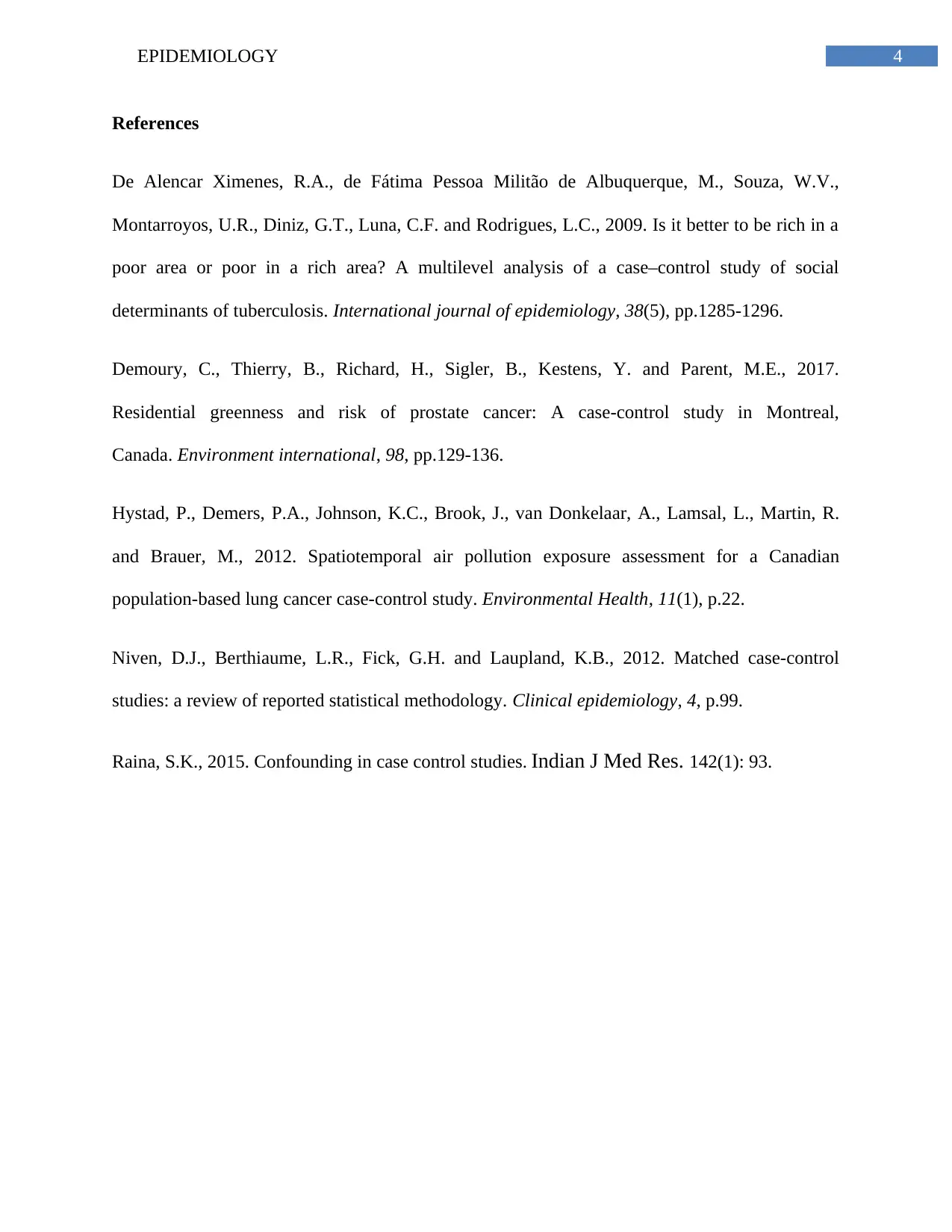Case Study: Epidemiology - Residential Greenness & Prostate Cancer
VerifiedAdded on 2023/06/10
|5
|930
|219
Case Study
AI Summary
This case study delves into the epidemiology of prostate cancer, specifically examining the correlation between residential greenness and the risk of developing the disease. The analysis is based on a case-control study conducted in Montreal, Canada, where researchers investigated whether living in greener areas was associated with a lower incidence of prostate cancer. The study addresses potential confounding factors such as age, socio-demographic variables, lifestyle choices (alcohol consumption, dietary habits, smoking), and family history of prostate cancer. Strategies to mitigate these confounding factors, including restricting controls and adjusting for individual and area-level variables, are also evaluated. The assessment of outcomes for both cases and controls is scrutinized for reliability and validity, ensuring that selection bias is minimized. Furthermore, the study's internal validity is assessed by examining the follow-up procedures, inclusion criteria, and the meaningfulness of exposure periods, considering the latency period between exposure and disease manifestation. This assignment solution provides detailed answers to questions regarding confounding factors, strategies to address them, outcome assessment, exposure period, and internal validity.
1 out of 5












![[object Object]](/_next/static/media/star-bottom.7253800d.svg)